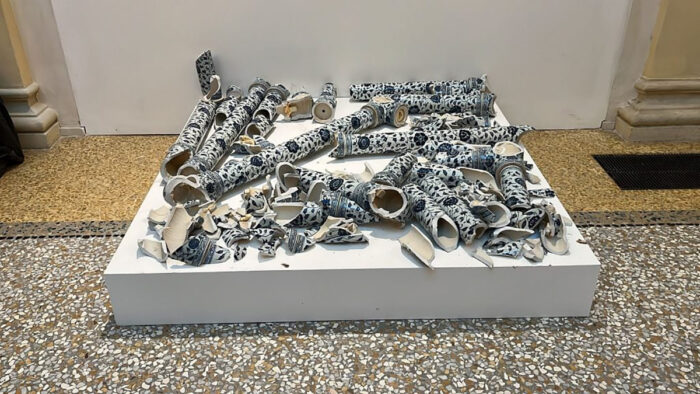
The destruction of Ai Weiwei’s Porcelain Cube at Palazzo Fava in Bologna is a distressing reminder of the fragility of art in public spaces. Weiwei’s reaction—both emotional and philosophical—captures the broader significance of this act beyond the physical shattering of the artwork. While Weiwei expresses his shock and dismay, his statement transcends personal loss, pointing to the deeper implications for art institutions and the public sphere. He draws attention to the disturbing reality that such acts of violence are not isolated incidents but reflect a growing tendency towards divisiveness in society. Weiwei’s contemplation of this event highlights a recurring theme in his oeuvre: the tension between creation and destruction, between tradition and disruption.
This incident also resonates strongly with Weiwei’s own explorations of destruction as a form of expression. His earlier work, Dropping a Han Dynasty Urn (1995), famously critiques the destruction of cultural heritage, while simultaneously engaging in a paradoxical act of creation. The irony that Porcelain Cube was destroyed while being exhibited alongside works that explicitly explore the theme of destruction adds another layer to the tragedy. It is as if Weiwei’s art, constantly engaged in a dialogue with loss and impermanence, has now been physically drawn into that very narrative. The museum’s decision to replace the shattered sculpture with a life-sized print of the original seems an apt response, echoing the idea of art’s endurance, even in the face of violence.

This incident also recalls other notorious acts of art vandalism, such as the suffragette attack on Velázquez’s The Rokeby Venus in 1914 or the more recent targeting of masterpieces by environmental activists. In each case, the destruction forces us to reconsider the public’s role in engaging with art and the protection of cultural objects. Ai Weiwei’s experience draws attention to the growing vulnerability of art in today’s world, where symbolic acts of violence have become disturbingly common, not only against artworks but as a reflection of societal tensions at large. It serves as a reminder that art, while resilient, is increasingly precarious in an age of conflict and upheaval.


